Key takeaways:
- What makes a great content collaboration platform? The best platforms go beyond simple file sharing or task tracking — they align cross-functional teams, standardize workflows, and centralize communication to streamline content production. Key features include automated intake, version control, visual dashboards, and integrated approvals, ensuring high-quality output and efficient collaboration.
- How can content collaboration tools improve project delivery and compliance? By automating repetitive steps, managing stakeholder input, and reinforcing consistent review processes, content platforms help teams meet deadlines while maintaining brand and regulatory standards. Built-in approval workflows, secure access controls, and real-time notifications ensure everyone stays on the same page.
- Why does centralizing your creative workspace matter? A shared digital workspace eliminates silos, reduces email clutter, and provides real-time visibility into task progress and team capacity. It enables designers, marketers, and stakeholders to collaborate in one place — improving transparency, speeding up reviews, and delivering stronger, more cohesive content across campaigns.
Great content isn’t created in a vacuum; it’s the result of clear workflows, shared ideas, and coordinated teamwork. Whether you’re producing marketing materials, design assets, or internal resources – such as graphics, videos, or regulated documents – the way you manage those creative processes is key to the success of your project.
That’s where content collaboration platforms come in.
Used alongside your design and editing tools, content collaboration platforms center your work. They share project plans and assets with the people who need them, and they break down the information silos that can hinder productivity. In turn, that enhances the content you make.
In this post, I’ll showcase Wrike, one of the best platforms for content collaboration. I’ll explain the key features and show you how to use them to build a production process that:
- Boosts efficiency by aligning creatives, marketers, managers, and clients in one central space
- Ensures compliance by standardizing your review and approval process and including key stakeholders at all the right points
- Produces high-value content by tapping into insights and feedback from your team
These tools help you deliver a better experience for your team and better results for your clients.
What makes a great piece of collaborative content software?
Any good content software must have a few core features to make it effective. File storage and version control for content management, commenting tools for document editing, and a certain level of workflow management functionality are non-negotiable — even if you work alone. These features keep all of the separate pieces of content you have to produce in view, so you can create and schedule them efficiently.
But these tools aren’t necessarily enough to make a content platform collaborative. If your main goals are to clarify roles, utilize team members with different skillsets, and accelerate a complex workflow, focus on platforms that include these key project management tools.
You’ll find all these team collaboration tools, and more, in Wrike.
6 features to look for in a content collaboration tool
1. Automated request management
When your creative team sees an uptick in requests, they need an intake system that scales to handle it. Without one, their creative workflows will face delays before they even get off the ground.
The best collaborative content software puts them on a firm footing from day one, by standardizing this intake process and automating the manual tasks it involves.
In Wrike, this means a system of dynamic request forms to gather information from clients, custom item types for the content you regularly produce, and a robust backlog system to hold new work items until they can be delegated.
2. Dynamic scheduling and timeline management
Teams juggling multiple ongoing tasks also need strong systems to deliver them on time. There’s no point in using an arbitrary system to schedule projects for a content creation team. It needs to take into account the effort each task represents and the team’s capacity.
Seamless collaboration software should include tools for scheduling content production, as well as just posting. For example, Wrike includes task management features to delegate and schedule new requests according to your current workload. And, if you need to adjust the timeline to perfect your content, we’ll automatically update your roadmap, including any dependent tasks.
3. Visual dashboards for a central source of truth
Content teams usually juggle multiple tasks that follow the same creative workflow. The best way to organize this approach to content production is not a spreadsheet — it’s an interactive dashboard that gives you an overview of the number of tasks, their status, the assignees, the due dates, and the risks to your current batch of content.
This bird’s-eye view aligns your team and helps them meet their shared goals, even while they’re working on different areas of the project.
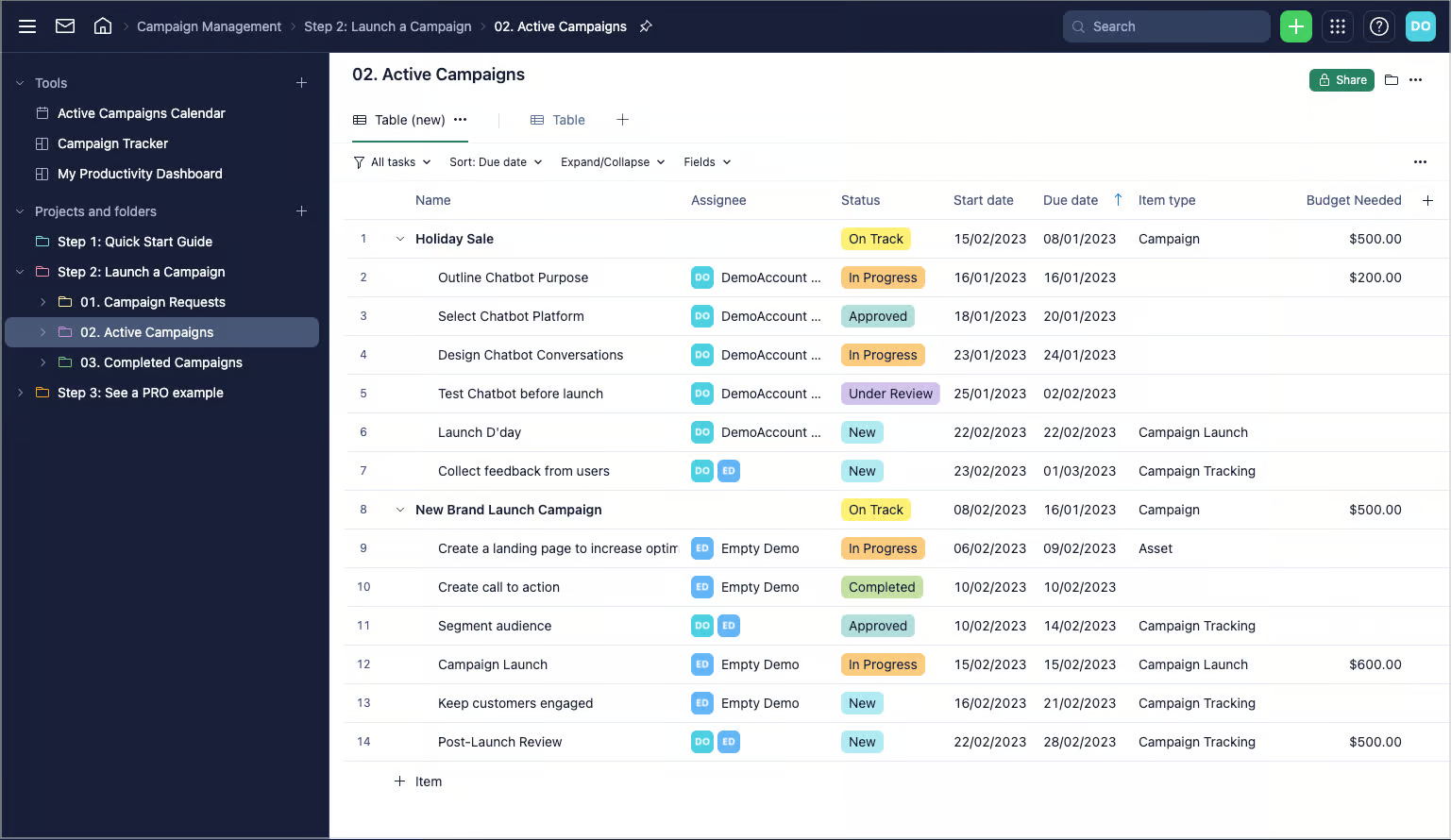
With Wrike, your content team can monitor progress in both shared and individual dashboards. This speeds up communication and informs the project management decisions you make.
4. Robust approval workflows for consistency and compliance
When you produce content at scale, you need to ensure that every item meets the same high standards. And when numerous different people have been involved in content production before the final stage, it’s even more important to designate a team member as the final approver. They’ll check for errors, make sure the content complies with your company’s regulations, and compare it to the original brief before you hand it to your client or publish it for your company.
Wrike’s workspaces offer approval workflow automation features, including user-friendly systems for document sharing, messaging, and recording feedback and approval decisions if the content is audited later.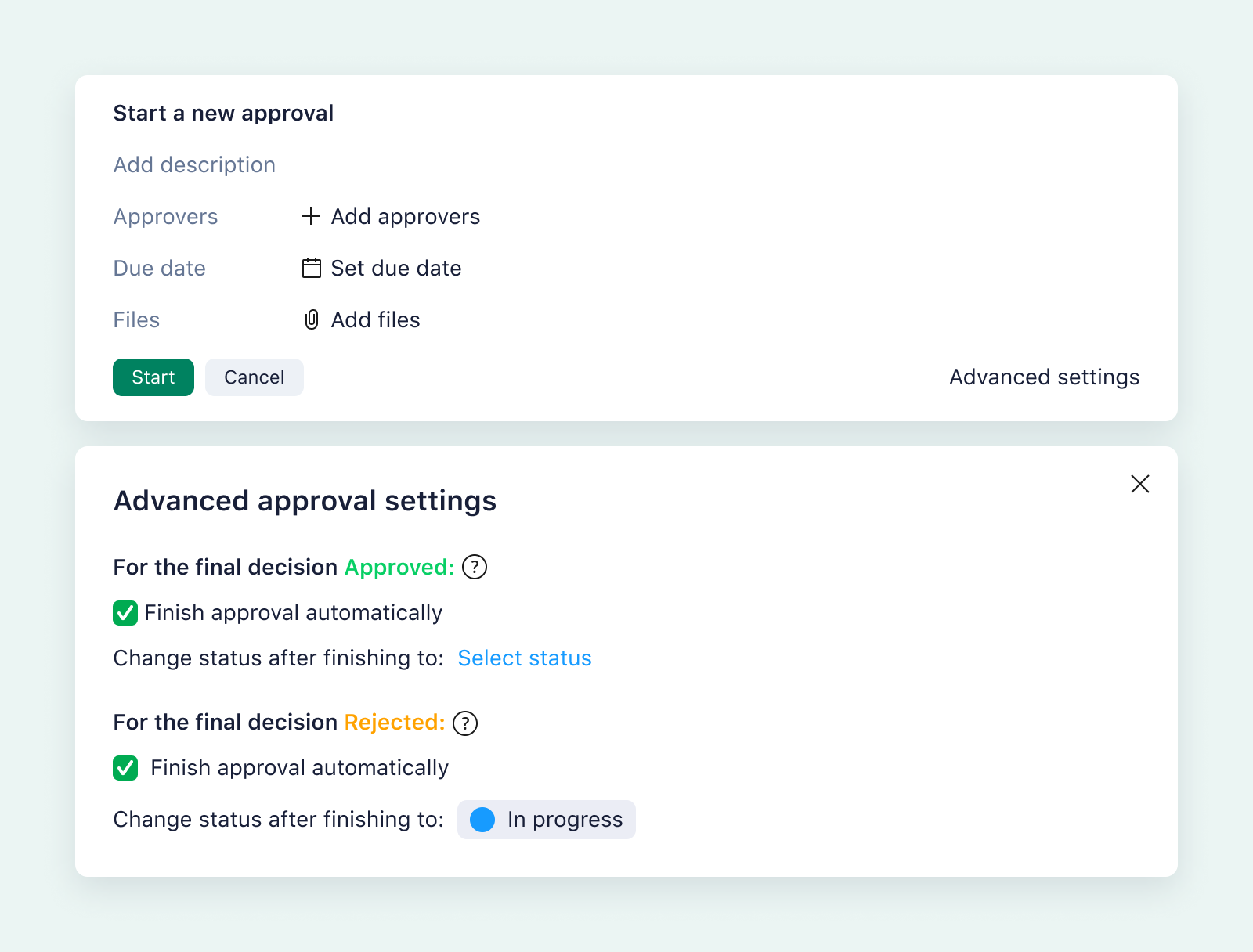
5. Secure file routing and storage
Content teams need access to a lot of different documents and design assets to do their job, and nothing slows a team down like combing old folders for the files they need. That’s why the best content collaboration software is built around document collaboration, namely, a robust and transparent system of folders and access roles. This way, team members can access the files they need independently, whenever they need to.
With Wrike, you can build a custom folder structure for your content team. We’ll keep your documents secure with a system of access controls, permissions, private workspaces, and enterprise-grade security protocols.
6. Campaign management tools
To be truly effective, your content collaboration platform should include campaign management features to monitor the results your content drives. When you can create and track your campaigns in one place, it’s far easier to apply your learnings to your next batch of content.
Wrike’s collaboration system takes you all the way from initial brainstorming to publication and beyond, with real-time campaign management dashboards. You can customize these dashboards to display vital metrics like total spend, clicks, and conversions, and break that data down by platform.
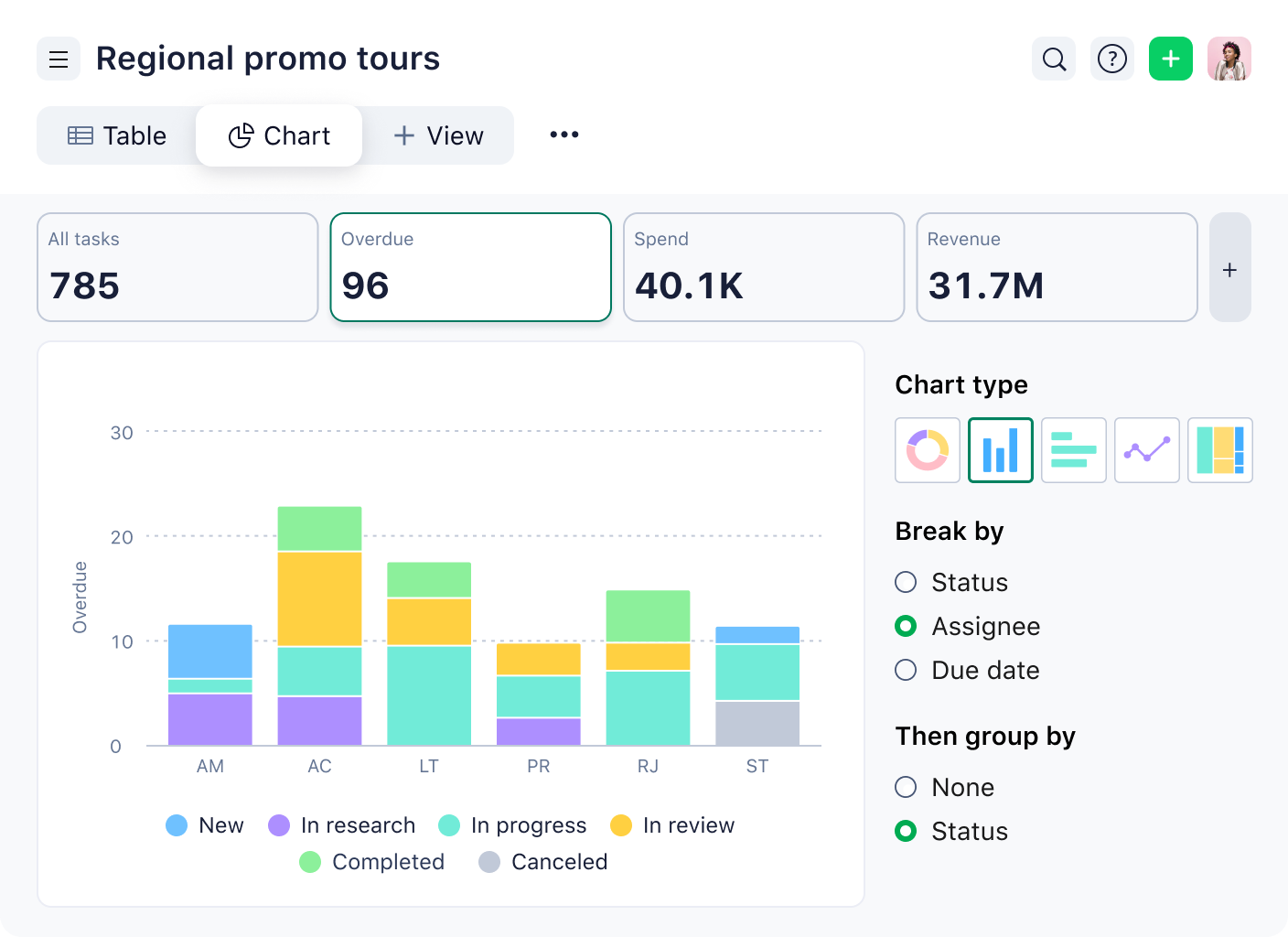
When content software is built around these six key features, you know you’ve found a genuinely collaborative platform. Tools like this standardize and automate your workflows from end to end, bringing transparency and consistency to your projects. They speed up information sharing through clearly defined channels. And they set expectations with your stakeholders and clients too, which ensures a smoother experience from kickoff to delivery and beyond.
Wrike combines all these features in one intuitive platform to compound those benefits for every content project.
Wrike’s content collaboration platform explained
When your design, marketing, or writing projects start to scale, Wrike is the all-in-one collaborative content platform you need.
Our work management system was built to streamline the flow of work for even the most complex teams. It’s also completely customizable, and there are hundreds of ways to integrate Wrike with the tools you use to create and edit your content. This makes a Wrike workspace the perfect shared platform for content teams to work at scale.
Now, I’ll explain more of Wrike’s creative workflow management tools, approval workflows, and integrations, to show you how to build the perfect online collaboration system for your unique content team.
Create a shared digital workspace
Wrike powers a shared, digital workspace for your content team — and any of the other departments they work with during their projects. Think of it as a central source of truth and the first step to truly collaborative content production.
In a Wrike workspace, team members can:
- View incoming content requests, which are sent straight from your client to your workspace or your content backlog through custom, descriptive request forms
- Communicate seamlessly, through a system of comments, notifications, reminders, and @mentions
- Keep up to date with the project timeline, displayed as a dynamic Gantt chart (best for flagship pieces of content with lots of dependent tasks), Kanban board (ideal for content produced in batches), or calendar (perfect for viewing upcoming deadlines and milestones)
- Access shared documents in project folders, organized by categories like client, quarter, or media format, including new and previous versions
- Monitor live progress in a shared dashboard, showing who’s working on the task, when it’s due, and its current status
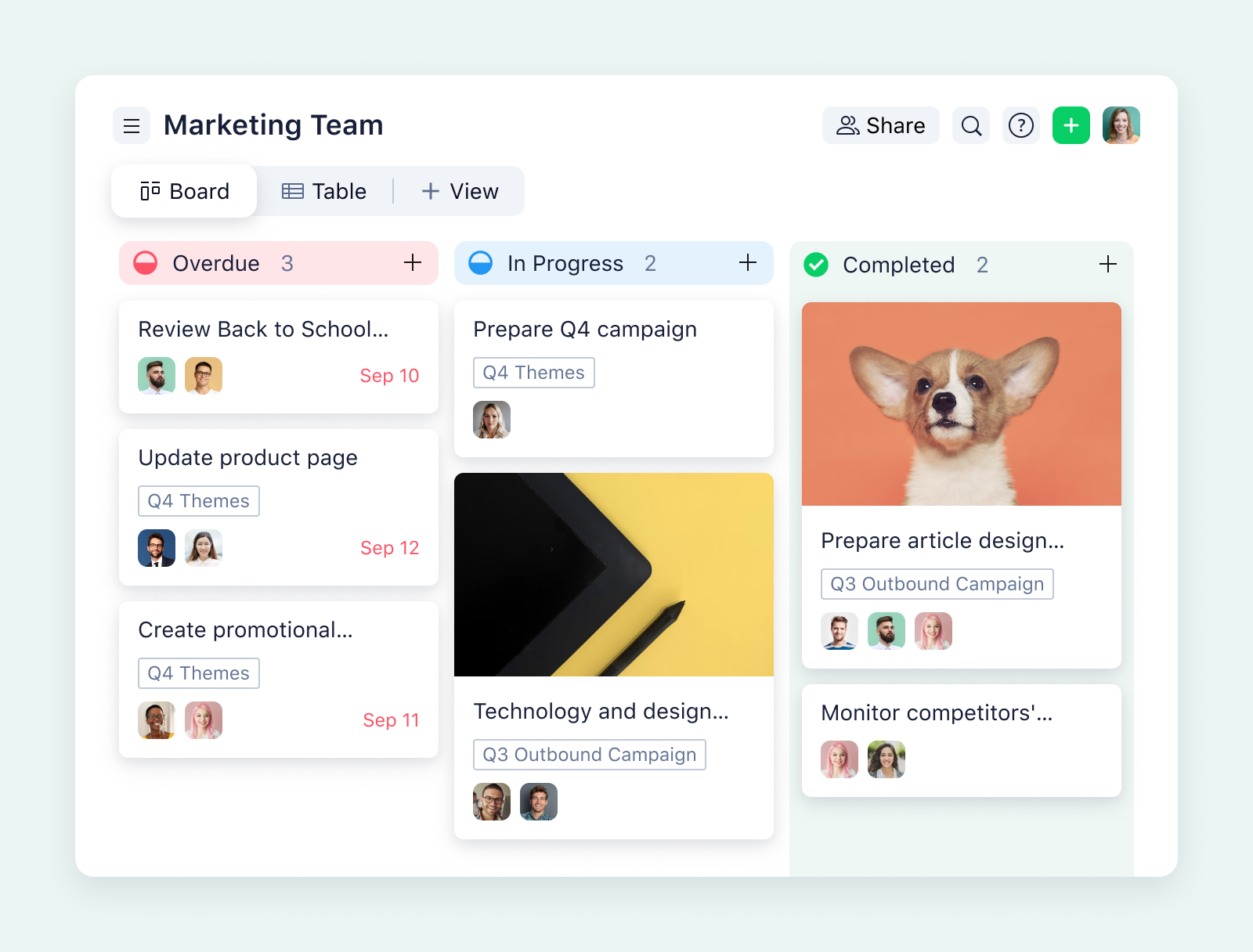
For example, you can easily jump from a Kanban overview like the one above to the task history information in the individual task card, to the latest version of the asset in the project folders, to the assignee’s workload in the capacity view. This makes it easy to stay informed and allocate resources to the team members who need them most.
This system removes many of the roadblocks that come from siloed, disconnected systems and file storage tools. Even for remote work and distributed teams, managers and team members can find answers to their questions in seconds.
Your workspace is also flexible. Wrike gives you the tools you need to customize everything from the workflows for your common content creation tasks, to the automations that power them, to your DAM system, to the workflow diagrams you use to display your current status at a glance.
Best of all, we’ve built Wrike to scale with your team. Whether you’re part of a micro agency or a marketing team for a global company, your workspace facilitates information and file sharing both within a content team and across an organization.
For example, check out cross-tagging, our innovative system for sharing assets and workflows across separate departments. This system allows a task to exist in multiple Wrike workspaces at the same time, without duplication.
Imagine the efficiency this can bring to a workflow for:
- A content team sending a task for review and approval from the company’s management
- A writing team collaborating with developers to produce a whitepaper for the launch of a new product
- An internal marketing team providing materials for the different department events at a company
- A design team providing assets to a web team to update the company’s online content
- All of these separate teams reporting expenses and total spend to the company’s finance team
To give a real-world example of Wrike’s collaboration workspaces in action, the Estée Lauder Companies use our tools to manage content production for over 30 different brands.
They use Wrike’s dashboards to track the content projects for each different brand, and to gather data to inform the stakeholders when setting strategic goals for the enterprise as a whole.
Jessica Wolfe, the Vice President of Tom Ford Beauty Global Marketing, told us that the Estée Lauder workflows and blueprints are standardized, but each team can add on “the specific nuances and steps that they need to.” This powerful, flexible system has brought consistency while adapting to individual needs, and drastically improved the quality of their reporting.

Each of our 30 brands has their own way of working. Wrike gives us consistency across our enterprise so we can report properly, but also allow for individualization.
Jessica Wolfe, Vice President at Tom Ford Beauty Global Marketing, The Estée Lauder Companies
Communicate more effectively
Beyond just making information and files more accessible to team members, Wrike helps them share ideas, give detailed feedback, and plan their work together. In our platform, you can have these discussions directly alongside your content workflows, your team calendars, and the latest drafts of your content. When you remove the need for external communication apps, you keep everything in view, so none of your tasks, requests, or comments fall through the cracks.
Our collaborative communication tools include:
- Instant notifications for your team members and task owners when a task is delegated, commented on, or when the workflow status changes
- Saved discussions and comments in the task history, so you can view the process as well as the ultimate approval decision
- AI-generated comment summaries to catch team members up with the latest discussions
- Custom reports to uncover and share insights, and inform the meetings you have about your content
With these communication tools, you virtually eliminate the need for internal emails or Slack messages in a content team. Since introducing Wrike, Electrolux’s design team received half the emails they did before, and Aerotek’s reduction was as high as 85–90%.
Instead of grappling with multiple communication and content management tools, imagine a creative workflow where:
- A new content request arrives, and the manager is informed straight away. Their job is immediately simplified, because Wrike’s intake process has already gathered information — like the requested completion date and the necessary images — and kicked off a workflow tailored to that specific type of content.
- The task is delegated, and the designer views it in their individual Wrike dashboard. This is a space where they can track their notifications and updates, view their upcoming tasks, and plan the best way to organize their work.
- The designer completes the task (with the help of Wrike’s integration with Adobe Creative Cloud) and sends it for review.
- The project manager sees an opportunity for improvement, and they compare the versions side by side, discussing the changes in real time, directly on the image.
- The new version of the asset is approved and sent to the client, without ever leaving the Wrike workspace.
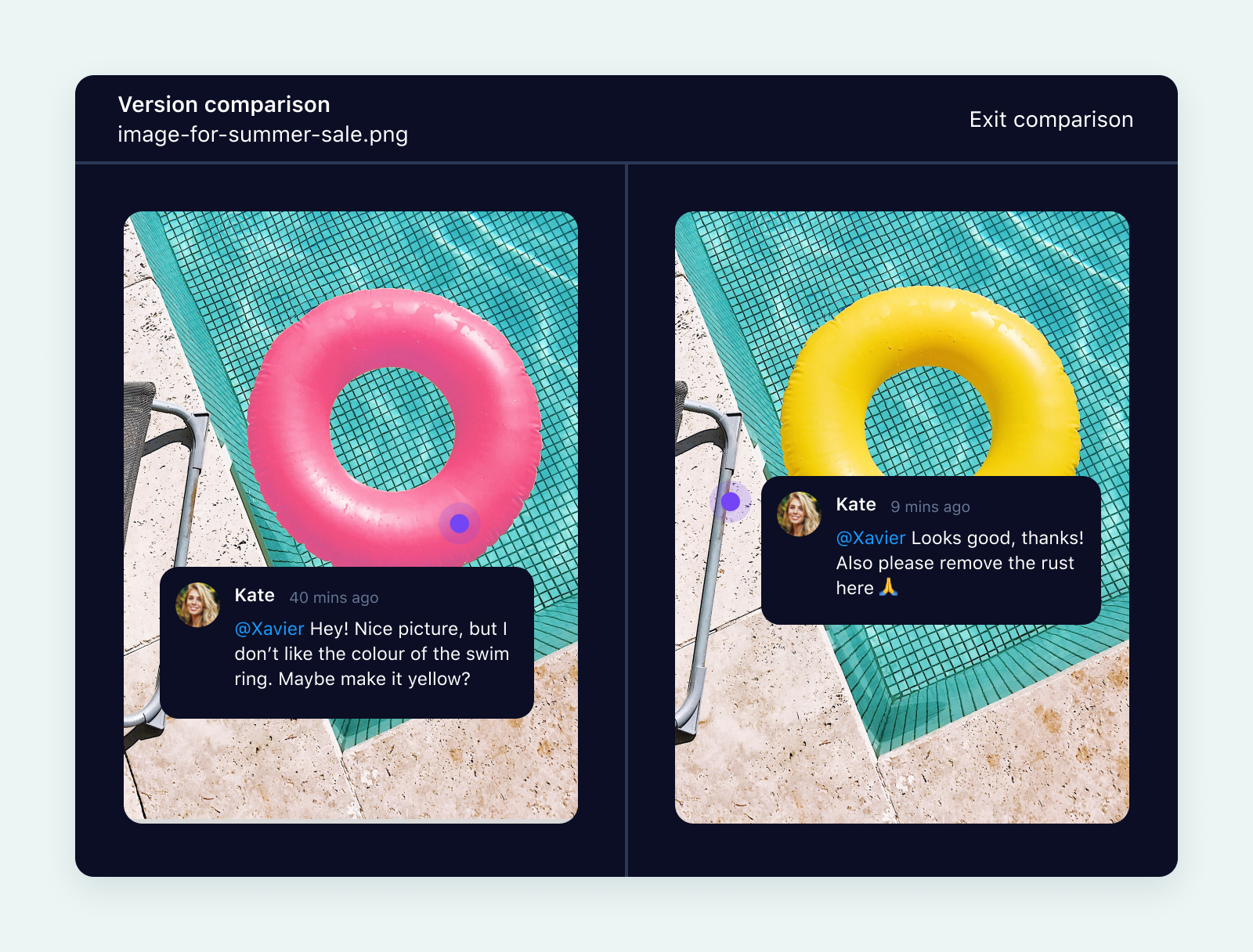
Visualize your process for all your stakeholders
Managing content also means managing stakeholders and clients. As the manager of a creative team, you’ll spend a lot of your day putting creative briefs together, updating stakeholders, and requesting their input or review. It’s time-consuming work.
Wrike doesn’t just serve the members of your content team; it also keeps your stakeholders informed at every stage of your workflow. This creates a smoother experience for everyone involved and leaves your content team with more time to focus on their creative tasks.
When you manage your content projects in Wrike, there are several ways to keep your clients and stakeholders in the loop.
First, you can adjust the access roles for your workspace.
If you have a campaign management dashboard, for example, you can give your company’s managers 24/7 access to this live overview. Then, they can check in on the key success metrics without having to schedule a call.
Alternatively, if you’re a creative agency working with a client, you can grant them access to certain areas of your workspace, like the Kanban overview. This gives them top-level insight into their project, while keeping data from your other clients under wraps. They can check in with the dashboard rather than with you directly, and you can use that information as a shared resource and a starting point when you do have to schedule a meeting.
Wrike also uses your workflow data to generate diagrams to show your project progress.
Burndown charts show whether you’re on track to meet your goals, pie charts show the proportion of completed tasks, and bar graphs can show task status in the context of each team member’s current workload. These graphics represent a lot of technical data, so you can keep your stakeholders on the same page, at a glance.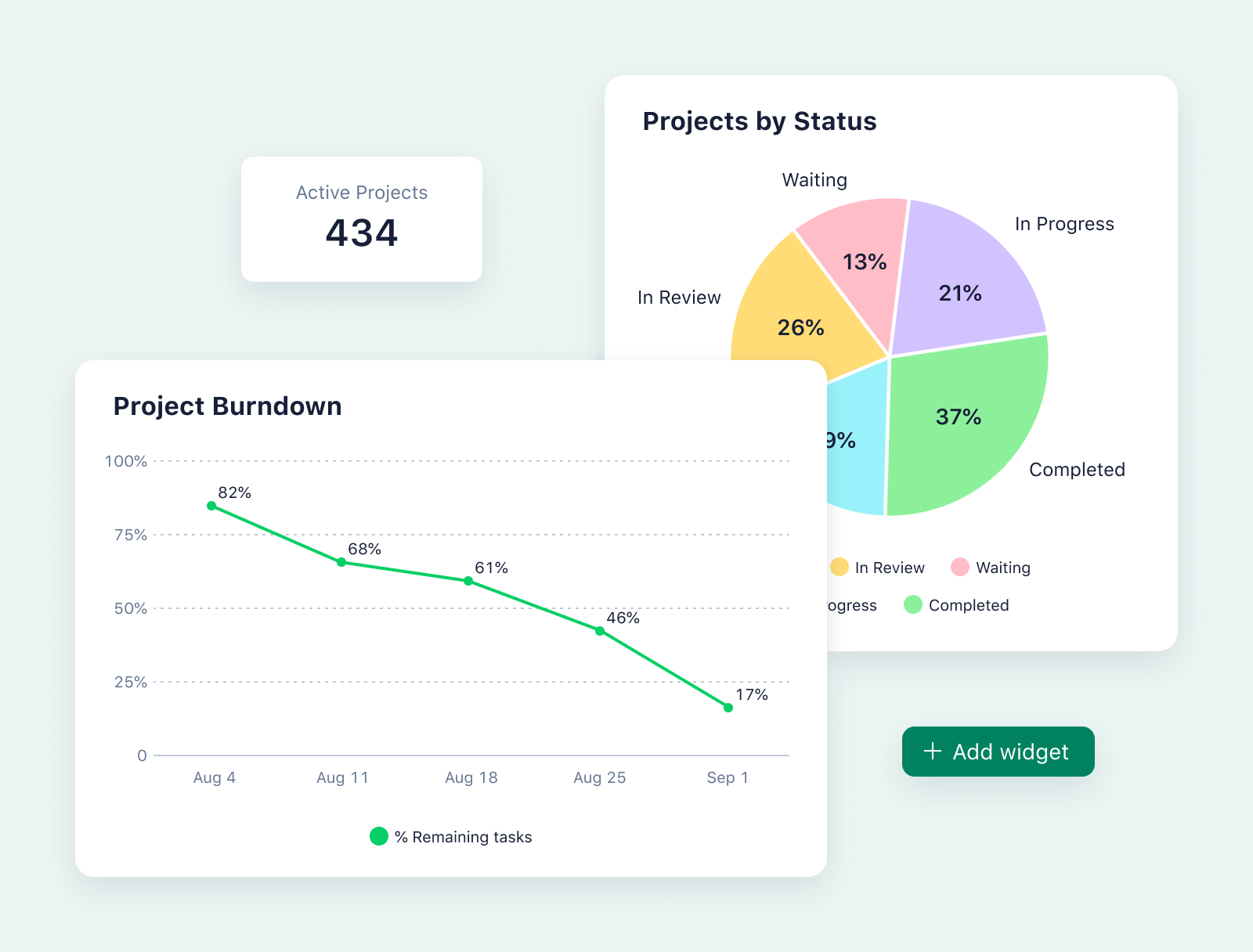
These reports are completely customizable, and you can set Wrike to generate them automatically and send them straight to your inbox. This is another great way to uncover insights and keep your stakeholders informed. Plus, if your projects are at risk, our risk management tools help you identify the issues before they derail the task.
Sony Pictures Television is testament to how Wrike can unite stakeholders for complex projects, and how easy it is to use. Their team has streamlined creative operations and reduced project time by 40% — because the platform makes it so smooth to onboard new users, customize workflows for different clientele, and scale up to meet each subteam’s needs.

Wrike is an incredibly intuitive tool that allows easy recording, reporting, and project management — while not being too scary for creatives to use.
Cheryl Venable, Senior Manager of Operations, Creative Center at Sony Pictures Television
Content collaboration in real time, with Wrike
Whether you’re in design, copywriting, creative leadership, or creative operations, collaboration is key to great content. And when your goal is to make that teamwork easier, Wrike gives you all the tools you need to centralize your content production process, boost communication, and report on your results.
Wrike’s creative workspaces are scalable and powerful, and they track your projects in granular detail. They’re also incredibly user-friendly, and it’s easy to start with a template. Find out more about our creative workspace templates to get your content collaboration platform up and running fast:
- Creative Asset Management Template
- Creative Asset Production Template
- Creative Asset Proofing and Approvals Template
- Work Requests Template
- Creative Brief Template
Or, contact our team to set up a demo today.





